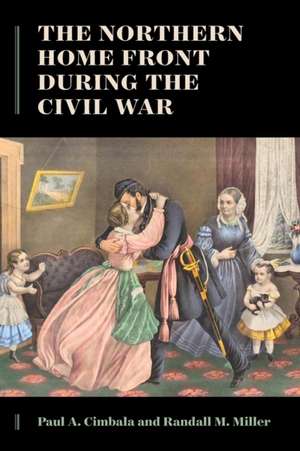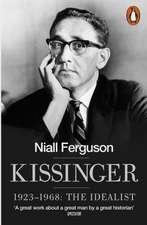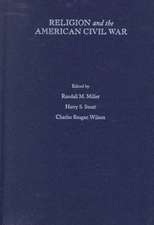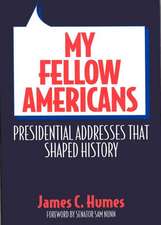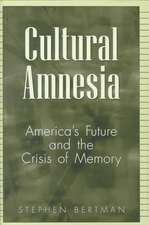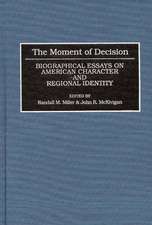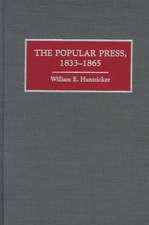Cuprins
During four years of Civil War, most Northerners conducted their lives as they had before Confederate forces had fired on Fort Sumter in April 1861. Mothers nursed sick children, families earned their livelihoods, and youngsters attended school. Young adults did not give up courting, and men and women did not give up their amusements. Storekeepers tended to their customers and stocked their shelves. Politicians ran for office, listened to the concerns of their constituents, and generally conducted themselves as they had and always will, guided in their actions by a mixture of civic duty and self-interest. Local authorities still had to deal with chicken thieves and other petty criminals. Battles in Virginia, Tennessee, and elsewhere did not keep ministers and priests from worrying about the souls of their congregations and the roofs of their churches. Indeed, in April 1864, Irvine Masters, mayor of Cleveland, Ohio, admitted, as the city continued to prosper, it had "not directly felt the shock of war."Despite such aspects of normality, the war insinuated itself into all of these activities and thus the lives of even the most unaware people living in the free states of the North. In August 1861, Ralph Waldo Emerson warned that the war will "engulf us all," and "no preoccupation can exclude, & no hermitage hide us." That same month, Nathaniel Hawthorne admitted his isolation to his daughters, noting that he either chose not to read or had no access to newspapers, a state that left him unaware of any Union disasters. Even so, he could not avoid the sounds of war. "Almost every hour," he wrote, "however, I hear the noise of drums, over the water, from Marblehead to Salem, and very often the thunder of cannon, which sometimes continues for an hour together; so that I begin to think the war has overspread the whole country except just this little precinct in the neighborhood of West Beach." Almost a year later in his article in the July 1862 Atlantic Monthly, Hawthorne admitted: "There is no remoteness of life and thought, no hermetically sealed seclusion, except, possibly, that of the grave, into which the disturbing influences of this war do not penetrate." Yankee writers, poets, and philosophers had the luxury to engage in exaggeration, but they also accepted their responsibility to speak the truth.Too often, the devastation in the Confederate states and the impact of emancipation, which fundamentally altered people's lives in the rebellious states, distracted attention from the many intrusions and disruptions the Civil War brought to people in the free Northern states. Most of the region escaped being trampled underfoot by invading armies or ravaged by guerilla raiders. But the war did indeed come to the North. As Massachusetts resident Charles A. Currier recalled, the war was always on the minds of the civilians from morning to night, discussed on the streets, in places of business, and in houses of worship. "[I]t turned our churches into depositories of hospital supplies, and made lint pickers of worshippers," he noted, and while the romantic notions of the earliest days had passed, the conflict now "settled thoughtful men into the conviction, that until it was fought to a conclusion, it must be made the absorbing business of the entire North."If children continued to attend school, they also added to their daily concerns the welfare of brothers, fathers, and uncles who were in the army and new burdens and responsibilities once deferred to an older age. If families continued their economic routines, they did so in a marketplace influenced by new government policies and the demands of a wartime economy. If women continued to manage households, they also extended their talents and interests outward to support the war effort. If young women and men courted, they often did so separated by the distance from home front to battlefield. And no one could long ignore the steady drumbeat of casualty lists, maimed veterans, and funerals that became part of the routines of their communities. Even as Cleveland's Mayor Masters reported on the progress of his city, he acknowledged the human cost that reminded his constituents of the consequences of the conflict. "Individual families have indeed been reminded by the sad bereavements, or longing absence of loved ones," he commented, "that war, in all its cruel and desolating power is raging in the land." It did not stop there, for the memory of the war also became part of the Northern mentality, as civilians and soldiers alike tried to make sense of what the conflict had wrought, insisting that the nation not forget the sacrifices so many people made to bring victory.Northerners, willingly or unwillingly, found their lives marked by America's ordeal. They could not escape being a part of the war and in fact were more than passive recipients of its consequences. In July 1861, William Y. Ripley, a Vermont businessman, wrote to his soldier son, explaining that despite what ideas politicians in Washington might have, "This war is a war of the people." That sentiment echoed Abraham Lincoln's insistence, on July 4, 1861, that the war was and must be "essentially a People's contest" that demanded steady resolve and commitment from everyone to save the great experiment in democratic self-government and realize the hope for freedom.Armies alone could not win the war. Thus, it becomes important to understand how the war intersected with the lives of those ordinary people on the home front beyond the policies set forth by Washington, because, in the end, they were the ones who gave shape and substance to the Union's final victory. Any consideration of what the people did for the war, however, must also assess what the war did for and to them. Understanding the ways the Northern people engaged and understood the war, and the war's impact on Northern society, culture, economy, and politics, is the principal concern of this book.* * *In completing this volume, we have accumulated a number of debts that we can hardly repay, but wish to acknowledge. First is recognizing the book's genealogy. The seed for this book came from a much longer draft version of a book chapter by Paul A. Cimbala that appeared as "The Northern Home Front during the Civil War," in Daily Lives of Civilians in Wartime Early America, Vol. 1: From the Colonial Era to the Civil War, edited by David S. Heidler and Jeanne T. Heidler (Westport, CT: Greenwood Press, 2007). Many of the ideas on subjects to investigate and the basic framework for our book derived from that initial chapter. Our book also owes much to the librarians at universities and archives who facilitated research, but special thanks go to the librarians at the Connecticut Historical Society, the Rockland, Maine, Historical Society, the Rockland, Maine, Public Library, Saint Joseph's University, the Historical Society of Pennsylvania, the Library Company of Philadelphia, Haverford College, and the University of Pennsylvania for their knowledge and assistance in identifying resources and providing them. We thank ABC-CLIO/Greenwood Publishing for permission to use material from Daily Lives of Civilians in Wartime noted above. Michael Millman, our editor at Praeger, deserves thanks for facilitating our request and for his patience in dealing with us over the many years we took to complete this book. John David Smith, the editor of the series in which this volume appears, has also stuck with us, encouraging this work as he has done so generously with other projects over the years. He also provided wise editorial counsel to insure our book's accuracy and enhance its value. He is our very good friend and mentor. Our beloved and uncommonly tolerant wives, Elizabeth C. Vozzola and Linda Patterson Miller, both esteemed scholars in their own right, kept us on task by reminding us that health and happiness can come from writing good history. We hope we have done so.
 Preț: 491.96 lei
Preț: 491.96 lei Preț: 584.31 lei
Preț: 584.31 lei Preț: 287.79 lei
Preț: 287.79 lei Preț: 290.69 lei
Preț: 290.69 lei Preț: 568.61 lei
Preț: 568.61 lei Preț: 340.24 lei
Preț: 340.24 lei Preț: 315.46 lei
Preț: 315.46 lei Preț: 263.26 lei
Preț: 263.26 lei Preț: 288.78 lei
Preț: 288.78 lei Preț: 294.55 lei
Preț: 294.55 lei Preț: 331.00 lei
Preț: 331.00 lei Preț: 439.34 lei
Preț: 439.34 lei Preț: 292.64 lei
Preț: 292.64 lei Preț: 291.46 lei
Preț: 291.46 lei Preț: 244.51 lei
Preț: 244.51 lei Preț: 340.63 lei
Preț: 340.63 lei Preț: 474.65 lei
Preț: 474.65 lei Preț: 292.26 lei
Preț: 292.26 lei Preț: 525.77 lei
Preț: 525.77 lei Preț: 258.85 lei
Preț: 258.85 lei Preț: 528.99 lei
Preț: 528.99 lei Preț: 242.49 lei
Preț: 242.49 lei Preț: 284.92 lei
Preț: 284.92 lei Preț: 283.01 lei
Preț: 283.01 lei Preț: 306.60 lei
Preț: 306.60 lei Preț: 266.13 lei
Preț: 266.13 lei Preț: 514.82 lei
Preț: 514.82 lei Preț: 290.51 lei
Preț: 290.51 lei Preț: 294.55 lei
Preț: 294.55 lei Preț: 619.14 lei
Preț: 619.14 lei Preț: 443.36 lei
Preț: 443.36 lei Preț: 291.46 lei
Preț: 291.46 lei Preț: 312.59 lei
Preț: 312.59 lei